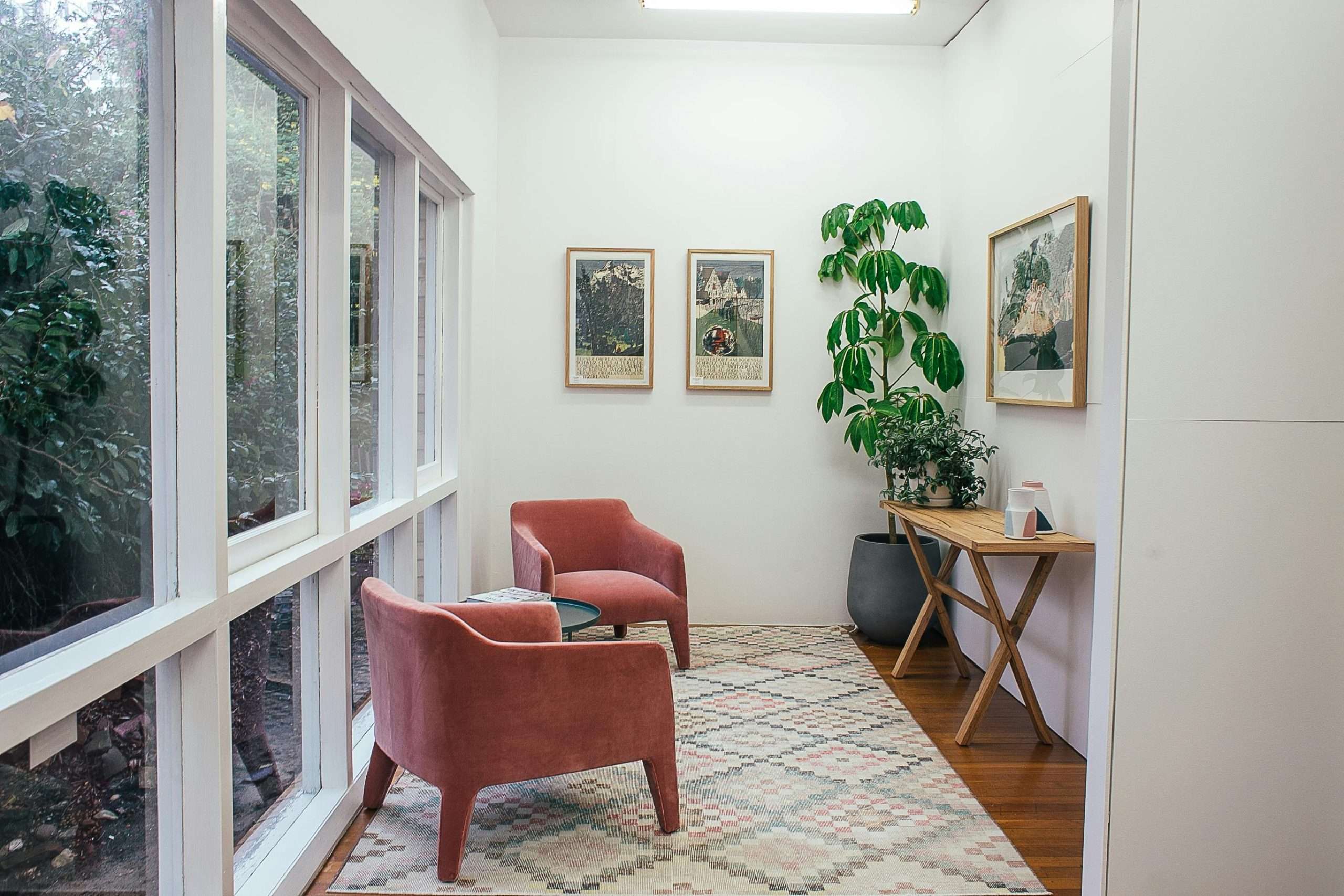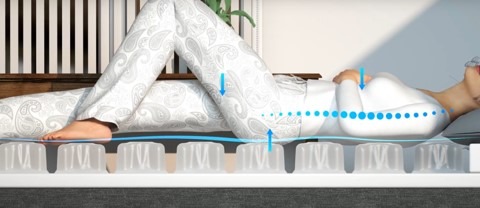How to Choose Carpets for Stairs and Hallways

Stairs and hallways are some of the busiest areas in your home.
When it comes to choosing a carpet for these spaces, you're not just picking a colour or pattern. You’re making a decision that affects safety, comfort, and even how well your flooring holds up over time.
The right carpet should soften footsteps, reduce echoes, and prevent slips, all while elevating your home’s overall look.
Assess Traffic and Usage
Before choosing a carpet, consider how your stairs and hallways are used. Is your household full of children, pets, and constant activity? Or is it a quieter space with less wear and tear?
High-traffic homes need hard-wearing materials that resist flattening and stains. To that end, nylon is one of the best options.
It’s resilient, springy, and handles daily use without losing shape. Polyester offers similar benefits at a lower price, though it’s slightly less durable over time.
If your household is smaller or you’re after something more exquisite, wool blends bring natural warmth and a classic look, but require more care and come at a higher cost.
In short, match the carpet to your lifestyle. The more traffic your stairs and hallways get, the more you’ll need something that prioritises durability over pure aesthetics.
Prioritise Safety Features
When it comes to stairs and hallways, safety isn’t just a bonus—it’s a must. These are the spots where socks turn into skates, toddlers sprint without warning, and pets think they’re in the Olympics.
To keep everyone upright, look for carpets with natural grip. Low-pile, tufted styles are your best bet. They hug the floor better and reduce the chances of slipping.
For an extra bit of safety, don’t skimp on the underlay. A quality one adds more cushioning, helps anchor the carpet, and adds extra stability underfoot.
Do you have little ones, pets, or a knack for dropping things? Life happens, and that’s totally fine. Go for carpets that are easy to clean and stain-resistant. You’ll thank yourself the next time a juice box takes a tumble.
If you're unsure, test a sample on the stairs. It’s the best way to see how it flexes and grips, before making a full commitment.
Just because you're playing it safe doesn't mean you have to get a boring rug. These days, you can find plenty of designs that are both practical and glamorous. Your hallway can turn heads while keeping feet steady.
Choose the Right Material
Carpet materials define how a space feels, wears, and even ages. Think of them as the personality behind the pattern. Some are hardworking and unfussy, others are elegant but high-maintenance. Try to pick one that suits your home’s character and your lifestyle.
Nylon is the overachiever of the bunch. It’s tough, stain-resistant, and bounces back well after a long day of foot traffic. If your hallway doubles as a racetrack for kids or pets, nylon keeps its cool without looking frazzled.
Wool, on the other hand, is the well-dressed classic. It’s soft, natural, and quietly luxurious. The best part is that it’s warm in winter, breathable in summer, and fully green at all times. Yes, it costs more, but it ages gracefully and has an incomparable lived-in charm.
Polyester and olefin are the budget-friendly extroverts. They come in bold colours, clean up easily, and are perfect for more relaxed zones. Just don’t expect them to last forever, or win any environmental awards.
In the end, your carpet’s material sets the tone for everything else. Whether you’re after eco-elegance or low-maintenance practicality, it pays to know what exactly you’re bringing into your home.
Consider Carpet Colour and Pattern
Carpet colour and pattern do more than decorate. The right choice can brighten a narrow hallway, disguise everyday wear, and bring just the right amount of personality to your floors.
Lighter shades, like cream, dove grey, or soft taupe, can make tight spaces feel more open and airy. They reflect light, giving hallways and staircases a sense of calm and space, even when there’s not much of either.
Darker tones, on the other hand, are more forgiving. Charcoal, navy, or deep brown won’t flinch at muddy shoes or scuffed heels. They’re practical without looking plain, which makes them great for households with plenty of foot traffic.
As for patterns, even a subtle one can elevate the look. Think gentle stripes, clean geometrics, or a textured weave. This is enough to keep things interesting without overwhelming the space.
Just make sure it all ties in. A carpet that clashes with nearby walls or furniture can feel out of place, even if it’s beautiful on its own. Look for colours and textures that flow naturally with the rest of your home.
It’s wise to test samples under your actual lighting. A shade that looks perfect in the store can take on a completely different tone at home, especially under artificial light.
Measure and Plan for Installation
When it comes to stair and hallway carpets, good planning is everything, and it starts with a tape measure.
Measure the width and length of each stair tread and riser, as well as the full length and width of the hallway.
Keep in mind that stairs, especially winding or irregular ones, often require extra material to cover curves and edges cleanly. That extra bit of carpet can make all the difference between a smooth finish and a patchy, uneven job.
Don’t forget about waste. Carpets are typically sold in fixed widths, and some off-cuts are inevitable. The more complex the layout, the more you’ll need to factor in. Running short isn’t just annoying — it’s costly.
Adding a little buffer to your measurements is a smart move. A few extra centimetres can help you avoid awkward seams or last-minute scrambles for matching material.
And if your staircase has tight corners or fancy curves, precision matters even more. This is where professional help can save time, money, and frustration. While DIY might seem like a budget-friendly option, the cost of fixing mistakes often outweighs the savings.
Finally, shop around. Carpet prices vary wildly between suppliers. Comparing quotes can help you find better value without sacrificing quality.
Budget for Maintenance
Choosing a budget-friendly carpet isn’t just about reading the price tag. The true cost shows up over time in maintenance, cleaning, and replacements.
A low-cost option might seem like a win at first glance. But if it wears out quickly, stains easily, or needs constant upkeep, those savings can quickly disappear. What looked like a bargain becomes an ongoing expense.
That’s why quality matters. Investing in stain-resistant materials often pays off. These carpets are built to handle everyday messes with minimal fuss, reducing the need for expensive cleaning or early replacement.
High-pile carpets, with their rich, plush feel, may look luxurious underfoot, but they come with added responsibilities. Just like a high-end car, they need regular professional care to keep their elegant appearance intact.
No matter what style you choose, regular maintenance is non-negotiable. Vacuuming, spot cleaning, and occasional deep cleaning will help your carpet stay fresh and last longer. But different materials come with different demands.
Take nylon, for instance. It's tough, low-maintenance, and easy to clean. Wool, on the other hand, is a natural luxury. It’s soft, durable, and beautiful, but it thrives on gentle treatment. It benefits from specialised carpet steam cleaning to maintain its look and lifespan.
Conclusion
Remember the last time you stepped into a grand hotel or a centuries-old château?
Before the chandeliers or the sweeping staircase even registered, it was the flooring that quietly set the tone. The soft hush underfoot, the elegance of a well-chosen weave, and the way the carpet guided your steps — all of it shaped the experience from the ground up.
Your home deserves the same kind of attention.
With the right materials, colours, and planning, stairs and hallways can be more than just passageways. They can be the most memorable features in your space.




